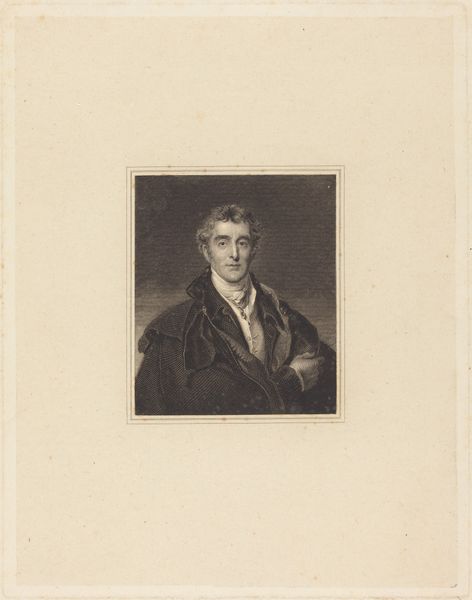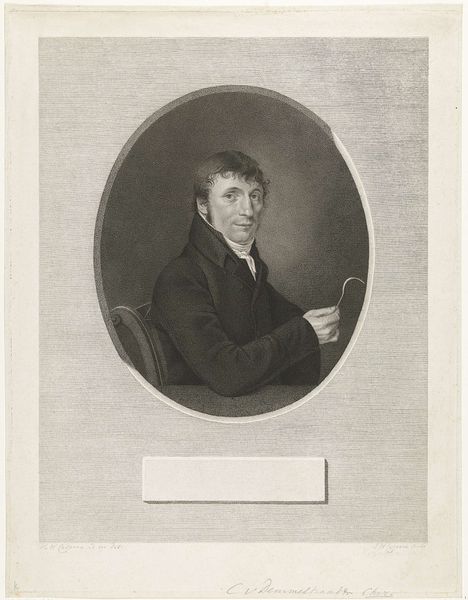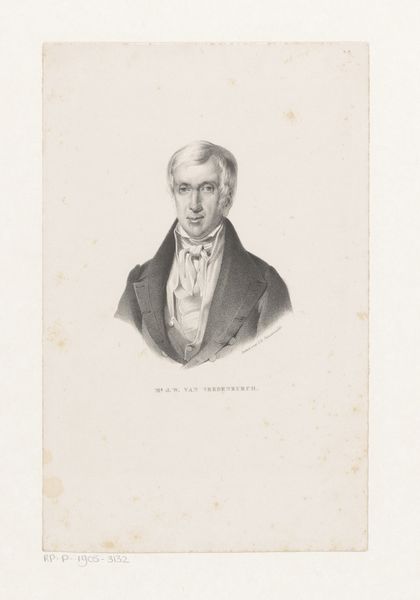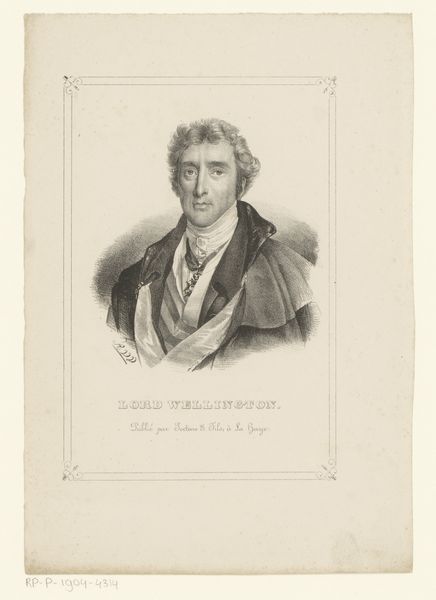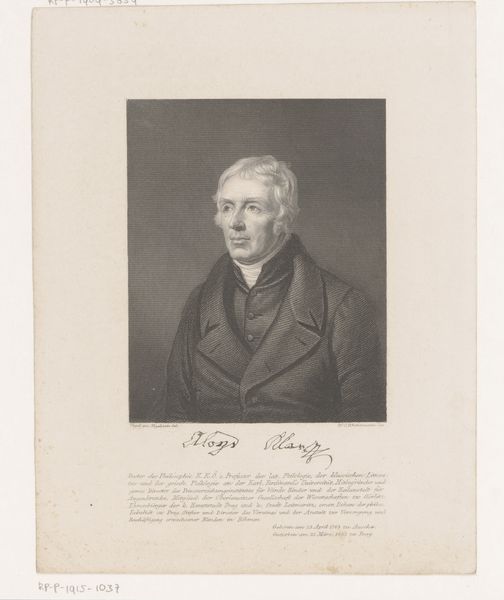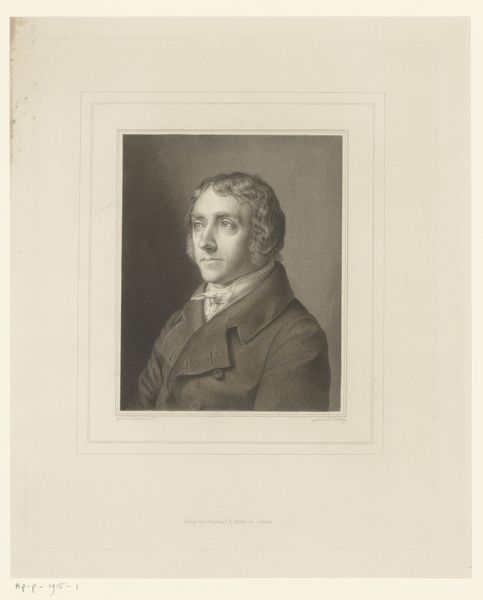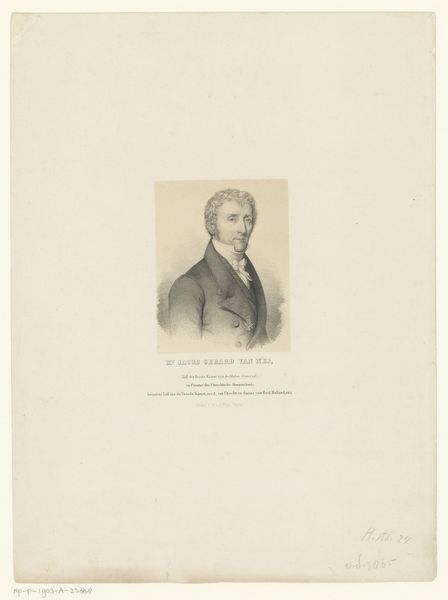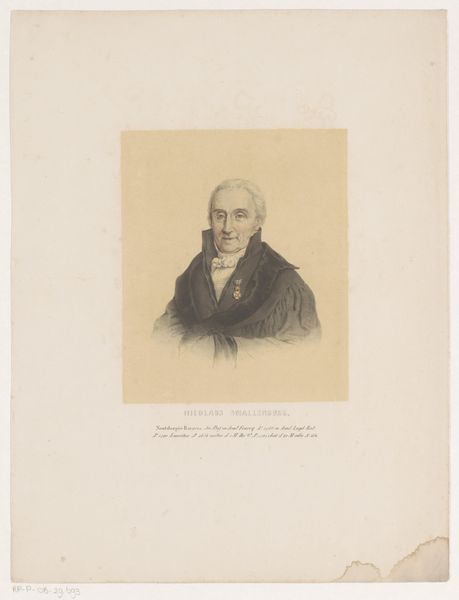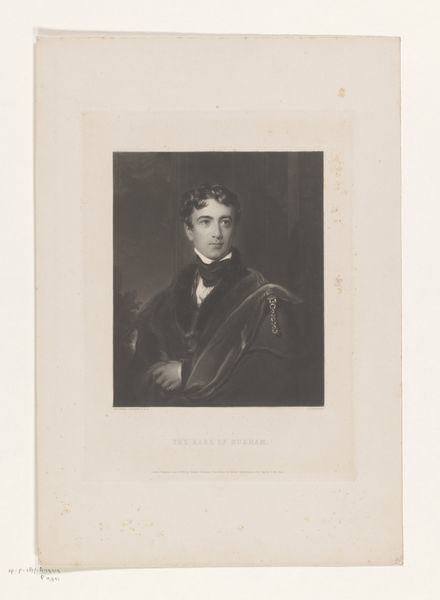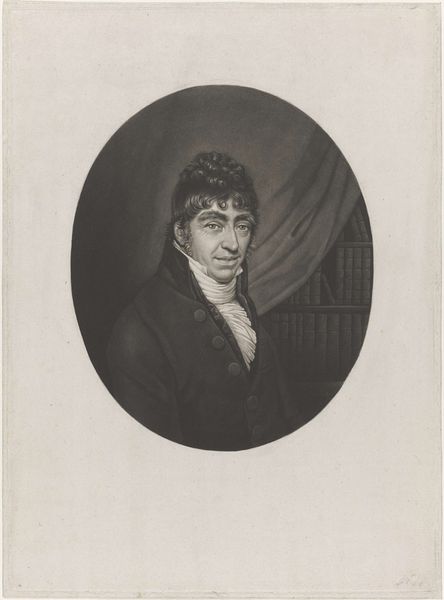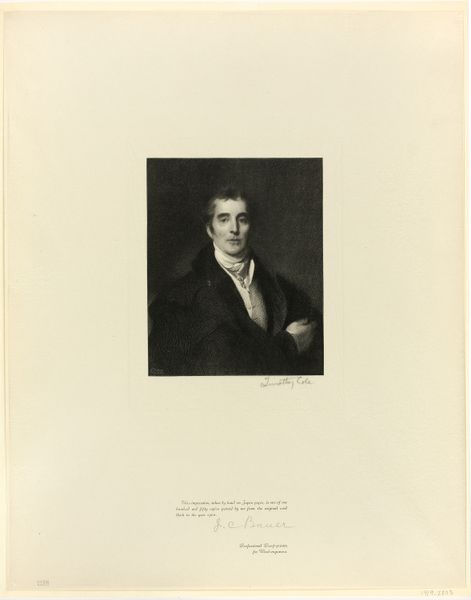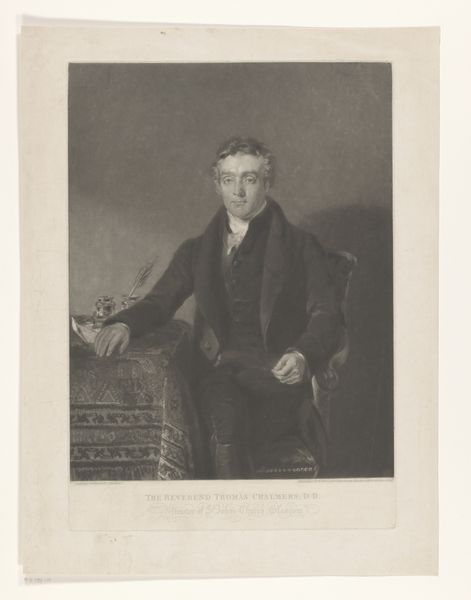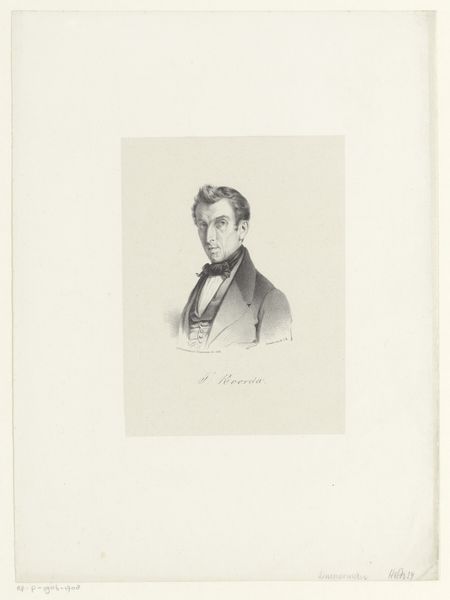
print, engraving
#
portrait
#
light pencil work
# print
#
history-painting
#
engraving
#
realism
Dimensions: height 305 mm, width 224 mm
Copyright: Rijks Museum: Open Domain
Editor: Here we have a print from 1844, "Portret van Arthur Wellesley," attributed to Edward McInnes. The tones are muted, and his expression seems rather stern, doesn't it? Almost like he's judging me. What do you make of it? Curator: Oh, I get that entirely! He looks like he’s seen things, hasn't he? It's interesting how a simple engraving, using just lines and shading, can convey such weight. McInnes really captured the Duke of Wellington's... well, his famous stoicism. Notice the details – the confident set of his jaw, the way the light catches the fabric. But is it truly a portrait or a romantic idea about who he was? Editor: That’s a good point. It’s hard to separate the man from the legend, especially when history gets involved. Is the medium of engraving also telling us something? Curator: Absolutely. Engravings were widely used for reproductions at the time, making images accessible. Think of this print not just as art, but as media! How it would have circulated ideas about power, leadership, British identity, you name it! That stern expression would become ubiquitous, shaping public perception. Don't you think it is quite genius? Editor: It really does add another layer. Seeing it as a piece of mass media really changes things for me. Curator: Exactly! It takes it from being just a face in a frame to being part of a broader cultural narrative. Makes you wonder how we are shaped by images every day. Editor: Thanks, I’ll definitely think about portraits differently now. Curator: My pleasure, that’s all I can really hope for.
Comments
No comments
Be the first to comment and join the conversation on the ultimate creative platform.
